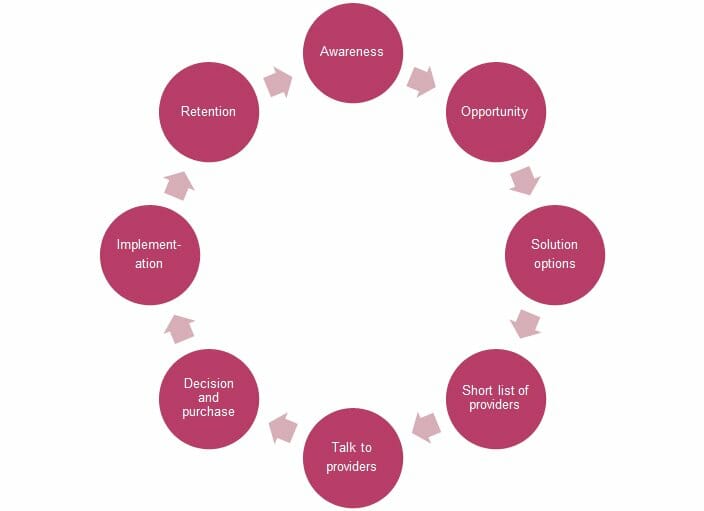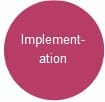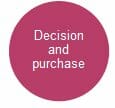The B2B (business to business) customer journey is the process a business goes through when considering buying from another business. The complexity of the process can vary significantly depending on the type of business and product or service being purchased.
As I specialise in B2B technology, this article refers to the B2B customer journey for a software product. There are 8 stages in the B2B software customer journey.

1. Awareness
 This is when the business realises it has a problem. There are different levels at the awareness stage.
This is when the business realises it has a problem. There are different levels at the awareness stage.
2. Opportunity
The business identifies the need for software to solve the problem and begins to research potential options to meet that need.
3. Software options
 In this stage, the business starts to evaluate and compare specific options to determine the best fit. This usually involves gathering information via websites including brochures and case studies and requesting recommendations from their peers.
In this stage, the business starts to evaluate and compare specific options to determine the best fit. This usually involves gathering information via websites including brochures and case studies and requesting recommendations from their peers.
4. Short list
The purchasing company will define a short list of software providers that they think will solve the problem. At this point they are unlikely to have spoken with any sales person.
5. Conversation with shortlisted software providers
 At this stage of the B2B customer journey, the customer will speak to software sales teams to get more information. Prices will be requested and compared.
At this stage of the B2B customer journey, the customer will speak to software sales teams to get more information. Prices will be requested and compared.
6. Decision and purchase
Once the business has gathered all the necessary information, it will make a decision about which software solution to purchase. This decision will be based on a number of factors, including price, quality, the reputation of the supplier and, not to forget, how well they get on with the sales person. People buy from people. This will always be a factor. The business will now buy the software and start the next step of the B2B customer journey – implementation.
7. Implementation
 Once the software, the supplier will create a plan to implement it. This may involve training and ongoing support from the supplier.
Once the software, the supplier will create a plan to implement it. This may involve training and ongoing support from the supplier.
8. Retention
 If the customer is satisfied with the software and the supplier’s service, there is now the potential for them to become a long-term customer. If not, the business may look for alternative options towards the end of the initial contract period.
If the customer is satisfied with the software and the supplier’s service, there is now the potential for them to become a long-term customer. If not, the business may look for alternative options towards the end of the initial contract period.
Further reading: More information can be found in this LinkedIn article.




